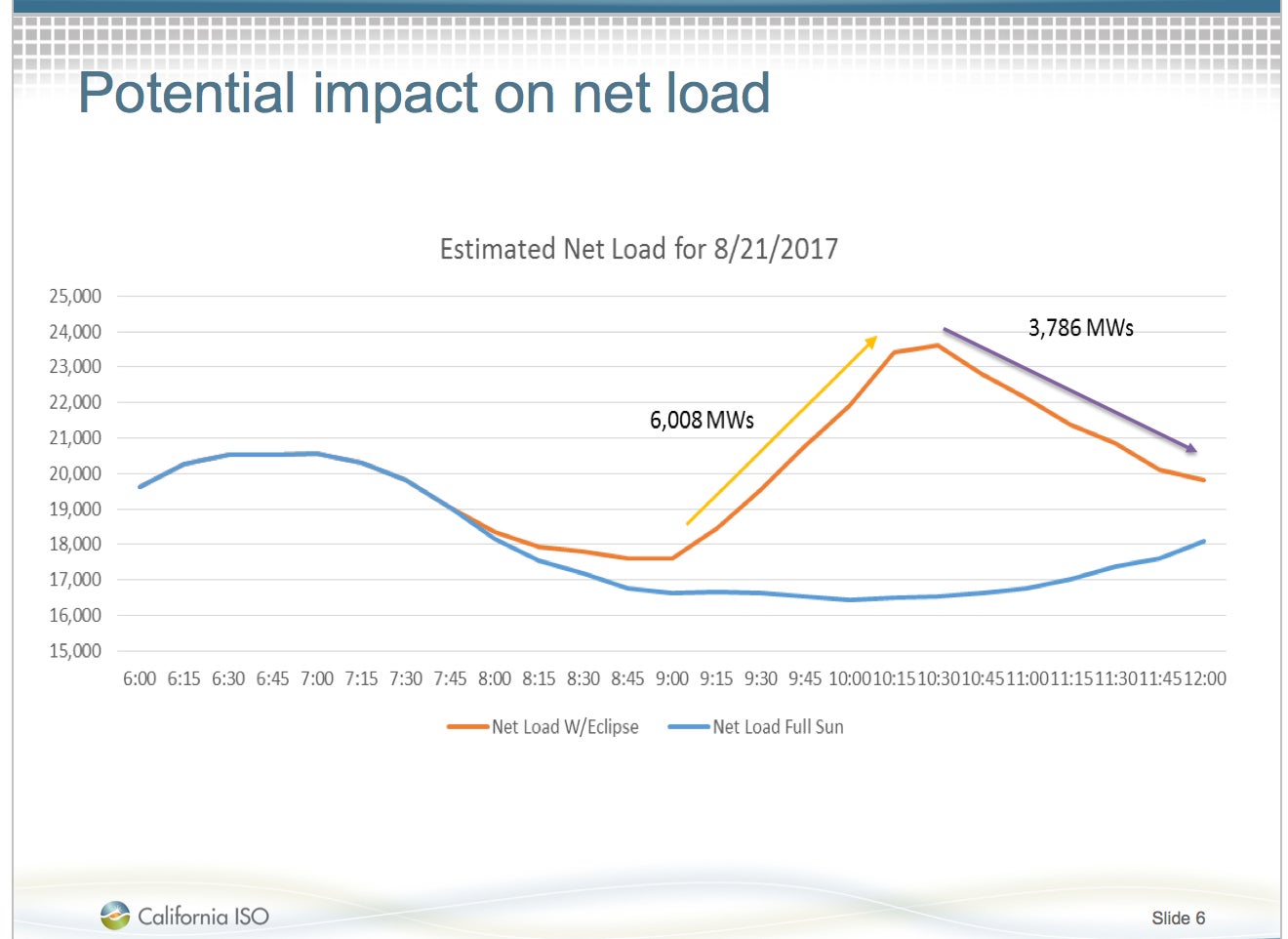The US is using so much solar power that it will have to prepare for the August eclipse
In the ancient world from the Mayans to the Egyptians, a solar eclipse portended one thing: “a disruption of the established order,” says E. C. Krupp, director of the Griffith astronomical observatory in Los Angeles.


In the ancient world from the Mayans to the Egyptians, a solar eclipse portended one thing: “a disruption of the established order,” says E. C. Krupp, director of the Griffith astronomical observatory in Los Angeles.

So it is today. With a solar eclipse due to sweep across the US on Aug. 21, utility operators are preparing to guard against a steep drop in solar power, reports the Financial Times (paywall). As the shadow of the moon passes over North America, the eclipse is expected to knock out about 70 megawatts a minute— two to three times faster than the typically daily drop, reports the California Independent System Operator (pdf). It will rebound even faster.
That’s not unmanageable, but it has prompted US utilities from California to North Carolina to look for a solution to a new problem: managing grids increasingly reliant on solar power.
California, which boasts about half the country’s solar capacity, has seen its share of solar power on the grid soar to 10% from 0.4% in the last five years, reports the US Energy Information Administration. On Aug. 21, that will translate into a 6,000 MW shortfall during the hours of the eclipse, enough to power a large city, relative to normal supply.

To compensate, utility operators are reserving spare capacity from gas and hydroelectric power plants, as well as coordinating with industrial sources to temporarily curb demand. Europeans, who saw 90% of new energy on the grid come from renewable sources in 2016, have already weathered eclipses successfully in the past. US operators are taking lessons from them.